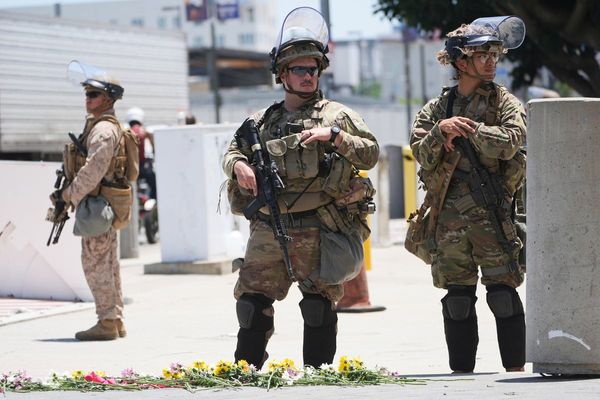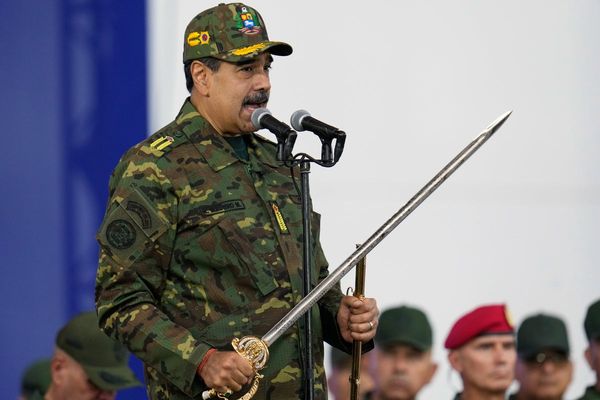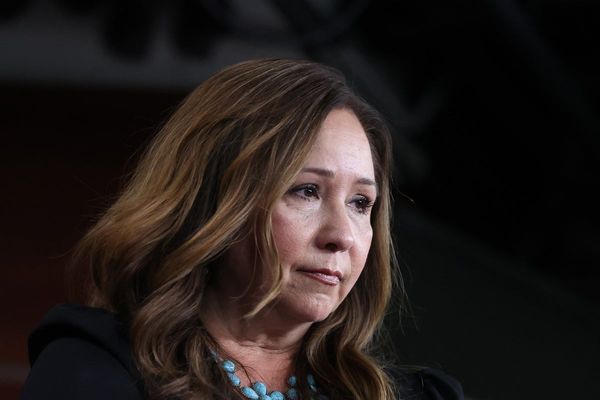
When Donald Trump announced a federal takeover of the Metropolitan police department in Washington DC on Monday, he left room for the possibility of making a similar move in other cities across the US, alluding to their high crime rates.
“You look at Chicago, how bad it is. You look at Los Angeles, how bad it is. We have other cities that are very bad,” Trump said. “We’re not going to let it happen, we’re not going to lose our cities.”
But both experts and elected officials have been quick to counter Trump’s claims, pointing out how major cities are in fact experiencing dramatic decreases in violent crime rates since they peaked during the pandemic.
“Every category of crime and every population group that the FBI covers is reporting a drop pretty much nationwide,” said Jeff Asher, an analyst who studies criminal justice data, adding that there was no disparity in the trend between red and blue cities or states.
The downward trend has been consistent nationally since around 2022, as the country began to recover from the pandemic, experts said.
“It’s clear that a lot of what we saw during the Covid-19 era has been reversed,” said Ames Grawert, senior counsel at the Brennan Center for Justice who researches crime trends.
While it’s impossible to isolate the exact causes of the spike in crime during the pandemic, several experts point to the collapse of social services as one cause. Since then, state and federal agencies poured money into communities for projects like gun violence prevention programs as well as more streetlights on local roads.
These programs are the same ones being slashed as the Trump administration has prioritized shrinking federal spending. The Department of Justice canceled hundreds of grants earlier this year that funded violence prevention and victims’ services programs, affecting organizations in 37 states.
Elected officials were quick to slam Trump for floating a possible federal takeover of police in their cities, citing local data that matched the same trend in the FBI data showing public safety improvements as well as pointing out the recent funding cuts.
In Chicago, Mayor Brandon Johnson said shootings were down by 40% in the last year alone.
“If President Trump wants to help make Chicago safer, he can start by releasing the funds for anti-violence programs that have been critical to our work to drive down crime and violence. Sending in the national guard would only serve to destabilize our city and undermine our public safety efforts,” he said.
And in Maryland, local and state officials released a joint statement similarly criticizing the president for painting a false narrative about where they lived and worked.
“As leaders in Baltimore and the state of Maryland, we stand in strong opposition to the president’s latest power grab, which is based on pure lies about our communities,” the statement said.
Officials pointed to a 40% drop in violent crime since 2021 and said that progress was being made on public safety issues, despite the challenge of facing the Trump administration’s funding cuts. Instead of calling in the national guard, Trump should be looking to partner with local officials, they said.
“We know from experience how to improve public safety: empower our community partners and violence interrupters, invest in our young people and prosecute repeat violent offenders in collaboration with law enforcement,” the statement said.
In New York, officials also pushed back fast on Trump’s rhetoric.
“New York is moving in the right direction in public safety,” the mayor, Eric Adams, said on Tuesday. While he added that he would be happy to accept more federal support, he added: “We don’t need anyone to come in and take over our law enforcement apparatus, we have the finest police department in the globe.”
Even Trump’s FBI director, Kash Patel, said on Joe Rogan’s podcast in June that murder rates were on track to reach a historic low this year.
“If we, the FBI and our government partners, achieve the mission, we’ll give the American people the lowest murder rate in decades,” he said.
While crime rates are trending in the right direction, there’s still work to do to improve public safety concerns, said Rachel Eisenberg, the managing director for rights and justice at the Center for American Progress. But, she said, communities are still best positioned to address these challenges rather than federal troops, echoing the concerns of local officials.
“What Trump is doing now is not about public safety,” she said. “It’s political theater.”
Trump doubled down on his claims on Wednesday, suggesting that the crime statistics are a fraud, without specifying which statistics. “Crime is the worst it’s ever been,” he said.
As national guard troops arrived in Washington DC this week, Thaddeus Johnson, a senior researcher at the Council on Criminal Justice, said that in the short term, it is likely arrests will go up.
“That can really capture the psyche of people and people can be sensationalized as it really plays on the fears of people,” Johnson said.
Ultimately, he said, it’s critical to address socioeconomic factors such as access to housing, unemployment rates and income inequity in order to improve public safety.
“Putting the feds in is not going to be the long-term answer,” Johnson said.
Meanwhile, Trump has already declared his policy move a victory. “People are feeling safe already,” he said on Wednesday. “They’re not afraid any more.”







